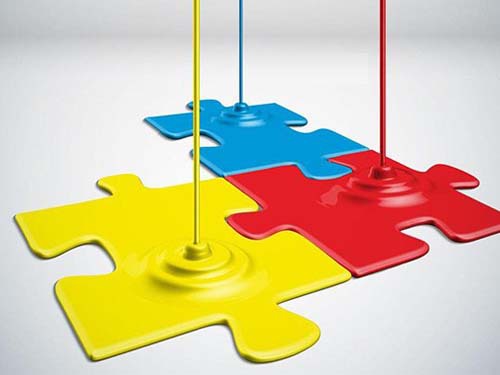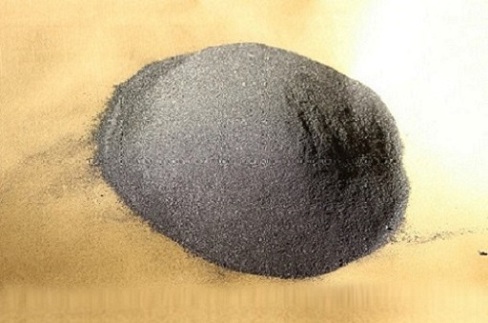
Recently, the United States Grand View Research company released a new global industrial coating market analysis report that at present, the global solvent-based products account for more than 75% of the total global industrial coatings. The emergence of this data can not help but be dazed - foreign water paint is not already promoted it?
In recent years, China has continuously promoted water-based paints. Apart from the severe haze in China, it urgently needs reorganization and protection of the environment. There is another important reason for this, that is, foreign water-based paints now account for 70% to 80% of the total. ratio. It is precisely because of this that China has actually fallen behind, and it is necessary to quickly catch up with the pace of foreign countries and step up the pace of waterborne coatings. However, such word-of-mouth data is often not true, and most of them are only rumored. Of course, the "70% to 80%" data is not out of thin air, and people in the industry pointed out that this "70% to 80%" of water-based paint refers to the architectural paint in this area, and the architectural paint industry itself is the possession of water-based paint. The amount is relatively large, so there is no such thing as an effort to advance this "water-based paint." At present, China's water-based paint actually refers specifically to "waterborne wood paint." As wood coatings and furniture lacquers belonging to the category of industrial coatings, according to the author's understanding, industrial coatings can be divided into water-based coatings, solvent-based coatings and powder coatings. Among them, solvent-based coatings still dominate the global industrial coating technology, and the proportion reaches More than 75% of the total. Not only domestically but also, the relevant laws and regulations of all countries in the world requiring reduction of VOC emissions are in full swing. Among them, waterborne coatings have an important role. Of course, technological advances in solvent-based coatings and powder coatings will also have an essential share in the process of increasing the market share of industrial coatings. The foreign moon is more round? When people promote water-based coatings, they always like to compare how they compare with ourselves. However, in fact, how to reduce the emission of VOCs and how to better promote water-based coatings is a matter of global concern. According to relevant reports, the development of water-based coatings is a problem that is highly valued by industrialized countries in the world. For example, the development of waterborne coatings in the United States accounts for more than 50% of all its paint developments, while the development of waterborne coatings accounts for 20% of all its total coatings. From the 21st century, Japan began to attach importance to and develop environmentally friendly coatings based on water-based coatings. In recent years, China has also issued many important environmental protection regulations and implementation standards for the research, development and production of water-based coatings. In 2015, China began to collect paint consumption tax and the “sewage charges†of the furniture industry. These two environmental protection policies directly address the current phenomenon of serious pollution in the two major industries of paint and furniture. The range of applications in industrial coatings. Of course, relying on the constraints of the policy is impossible to accomplish such an arduous task. It is more important for colleagues who are doing basic environmental protection procedures to change the “difficult to promote†status of water-based paints in terms of production techniques, painting and other aspects.
Graphite is an elemental element of elemental carbon. Each carbon atom is surrounded by three other carbon atoms (arranged in a honeycomb-like hexagon) to covalently bond to form a covalent molecule.
Since each carbon atom emits an electron, the electrons are free to move, so the graphite belongs to the conductor. Graphite is one of the softest minerals, and its use includes the manufacture of pencils and lubricants. Carbon is a non-metallic element that is located in the second periodic IVA family of the periodic table.
The specific use of graphite
1, for refractory materials, including refractory bricks, crucible, continuous casting powder, casting core, mold detergent and high temperature materials.
Magnesium carbon brick refractory material is the mid-60s, developed by the United States; in the world of magnesium carbon brick has been widely used in steel, and has become a traditional use of graphite. Aluminum carbon brick aluminum carbon refractories are mainly used for continuous casting, flat billet from the pipeline of the protective cover, underwater nozzle and oil well blasting tube.
Made of graphite and refractory crucible and its related products, such as crucible, curved neck bottles, plugs and nozzles, etc., with high fire resistance, low thermal expansion, melting metal process, by metal infiltration and erosion But also stable, good thermal shock stability at high temperatures and excellent thermal conductivity, so the artifacts and its related products are widely used in direct melting metal process.
2, steelmaking
Graphite and other impurity materials can be used as carbonizers in the steelmaking industry. Carburizing uses a wide range of carbonaceous materials, including artificial graphite, petroleum coke, metallurgical coke and Natural Graphite. In the world of steel-making carbon-based graphite is still one of the main uses of earth-like graphite.
3, for the conductive material
Graphite in the electrical industry is widely used as electrodes, brushes, carbon rods, carbon tubes, mercury rectifier cathode, graphite gaskets, telephone parts, TV picture tube coating and so on. Among them, Graphite Electrode is the most widely used, in the smelting of various alloy steel, ferroalloy, the extensive use of graphite electrodes. The graphite used in the electrical industry is very demanding on grain size and grade.
4, for wear and lubrication materials
Graphite is often used as a lubricant in the machinery industry. Lubricants are often not used in high-speed, high-temperature, high-pressure conditions, and graphite wear-resistant materials can be 200 ℃ a 2000 ℃ temperature and at a high sliding speed (loom / s) without lubricating oil work. Many of the equipment that transport corrosive media, widely used graphite materials made of piston rings, seals and bearings, they run, do not need to add lubricants, graphite milk is also a lot of metal processing (wire drawing, pull tube) when the good lubricant.
5, for corrosion-resistant materials
Graphite has good chemical stability. After special processing of graphite, with corrosion resistance, good thermal conductivity, low permeability and other characteristics, and widely used in the production of heat exchangers, reaction tank, condensate, combustion tower, absorption tower, cooler, heater, filter Pumps and other equipment. These equipment for the petrochemical, hydrometallurgical, acid and alkali production, synthetic fiber, paper and other industrial sectors, can save a lot of metal materials.
6, for the atomic energy industry and the defense industry
Graphite has a good neutron deceleration performance, the earliest as a slowdown agent for atomic reactors, "uranium-graphite" reactor is currently used more of an atomic reactor. As the power of the atomic energy reactor in the slowdown material should have a high melting point, stable, corrosion-resistant properties, graphite can meet the above requirements.
7, for anti-scaling anti-rust materials.
Graphite can prevent boiler fouling. Tests have shown that adding a certain amount of Graphite Powder to the water prevents the surface of the boiler from scaling. In addition, graphite coated with metal chimneys, roofs, bridges, pipes can be anti-corrosion and rust.
8, graphite new use
1) Flexible graphite products. Flexible graphite, also known as Expanded Graphite, is the 1970s developed a new graphite products. 1971 US research success of flexible graphite sealing material, to solve the problem of atomic valve leakage, followed by Germany, Japan, France also began to develop production. In addition to this product has the characteristics of natural graphite, but also has a special flexibility and flexibility. Therefore, it is an ideal sealing material, widely used in petrochemical, atomic and other industrial fields, the international market demand growth year after year.
2) the production of semi-metallic friction materials. Since the 1970s, clutches and automatic liners have been widely used semi-metallic friction materials. Semi-metallic friction material is the graphite and metal powder, steel fiber, clay powder made of synthetic resin. These automatic lining can be used for high-speed equipment such as aircraft, trucks and off-road vehicles, and clutch pads.

Graphite
Carbon Graphite,Graphite Mineral,Monolithic Graphene,Graphite Crystal
Fengcheng Ruixing Carbon Products Co., Ltd , http://www.lnfcrxts.com